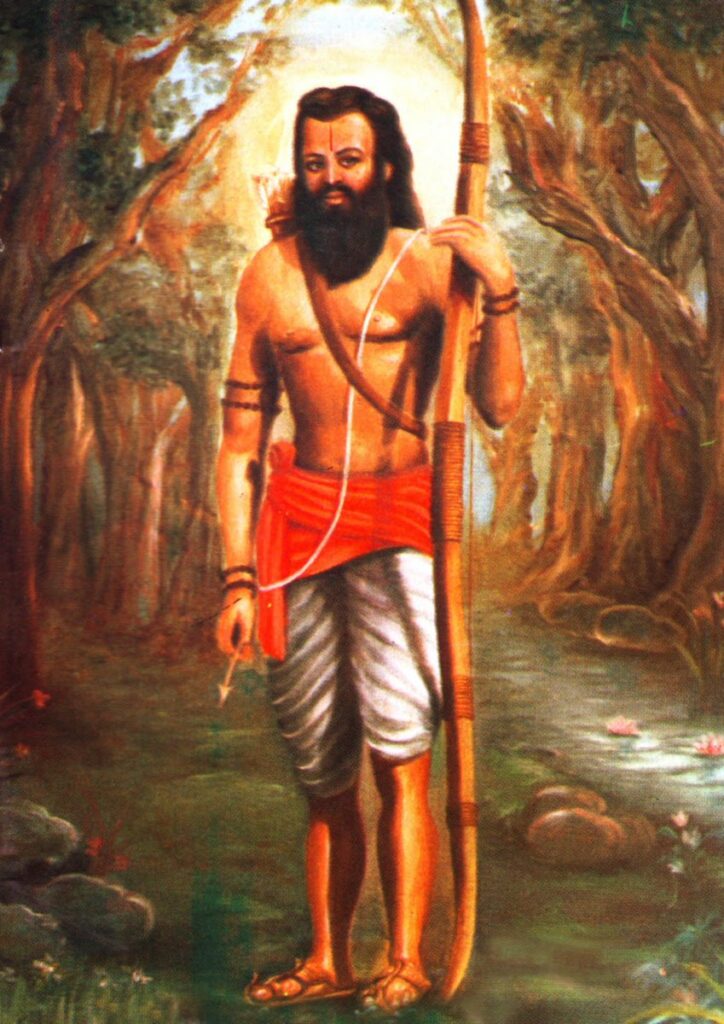While the entire nation in the early 1900s was fighting against The British Raj, joining Gandhi’s Non-Cooperation Movement and such, there was a hero who was such a strong rebel, that the British had to race a special force which was trained in guerrilla warfare to catch him. His name was Alluri Sitarama Raju, fondly remembered as the Maanyam Veerudu (Hero of the Jungle).
Despite being a staunch Gandhian, he broke just one rule of that philosophy: non-violence. He trained an entire tribal force in guerrilla warfare to bring about a full-scale rebellion in the Madras presidency. Notably, he was not a tribal himself.
While a lot of other freedom fighters have been remembered time and again during each Independence Day and Republic Day, Sitarama Raju remains to be one of the lesser-known faces of the movement on a national level.
Early life
The details of his early life are very disputed, as there are different versions in different records. He was born to Venkata Rama Raju and Suryanarayanamma.
The records of his education are also very distorted as people say that he never had a formal educational background. He had taken a particular interest in topics like astrology, herbalism, palmistry, and horse riding, post which he became an ascetic at 18 years of age.
He then resorted to roaming the hills and forests of the Godavari Agency, the region now known as the East and West Godavari districts. There are several folktales and lore surrounding him, that say that he was someone with magical powers. He was even regarded as a Messiah of sorts to the tribal communities in the area, as they had been excessively or pressed into a humiliating existence.
The Rampa Rebellion
The Madras Forest Act had been passed in 1882 which had prevented the free movement of tribals in the forests which prevented from engaging in traditional podu agriculture, the shifting cultivation method prevalent in Andhra region.
Raju had initially adopted a staunch Gandhian methodology wherein he had the tribal community boycotting the justice systems established by the British rule and resorting to the Panchayati Raj. As the Non-Cooperation Movement died out in 1922, he used the momentum that had been triggered due to this movement and used it to recruit locals and train them in Gorilla warfare practices.
This came to be formerly known as the Rampa rebellion. Raju led 500 people under this movement, ravaging colonial symbols and structures at various provinces around the Godavari Agency. They snatched all the weapons in armoury during these attacks and continued to wreak havoc in the minds of the British. The first of such attacks was made on Chintapalli police station in the Visakhapatnam Agency area on August 22, 1922, with over 300 revolutionaries under the leadership of Raju taking part in it. Subsequently, similar attacks were made on the Krishnadevi Peta and Raja Ommangi police stations.
A large contingent, which was called the special Malabar force, was then trained by the British in Gorilla Warfare in order to nab this tribal hero.
Death and posthumous accolades
On May 7th, 1924, he was trapped by the British in the forests of Chintapalli, and shot to death by having been tied to a tree in Koyyuru village.
His tomb now resides in Krishna Devi Peta village, and he has been posthumously conferred with the titles Maanyam Veerudu and Mannem Dora. In 1986, the Indian government issued a stamp in his honour commemorating his birth anniversary.
The Andhra Pradesh state government has also proposed to develop his birthplace, which is now the village of Pandrangi, and has declared that one of the new districts is to be named after this revolutionary leader. His biography is also to be included in the state board’s curriculum. There has also been an appeal to the central government to install his statue in the Parliament premises, which was recently accepted by the Central Government.
This forgotten hero is lesser-known in other parts of India as well as the world. The Commune pays obeisance to one of the greatest revolutionaries of Indian Freedom Struggle on his 155th birth anniversary.

